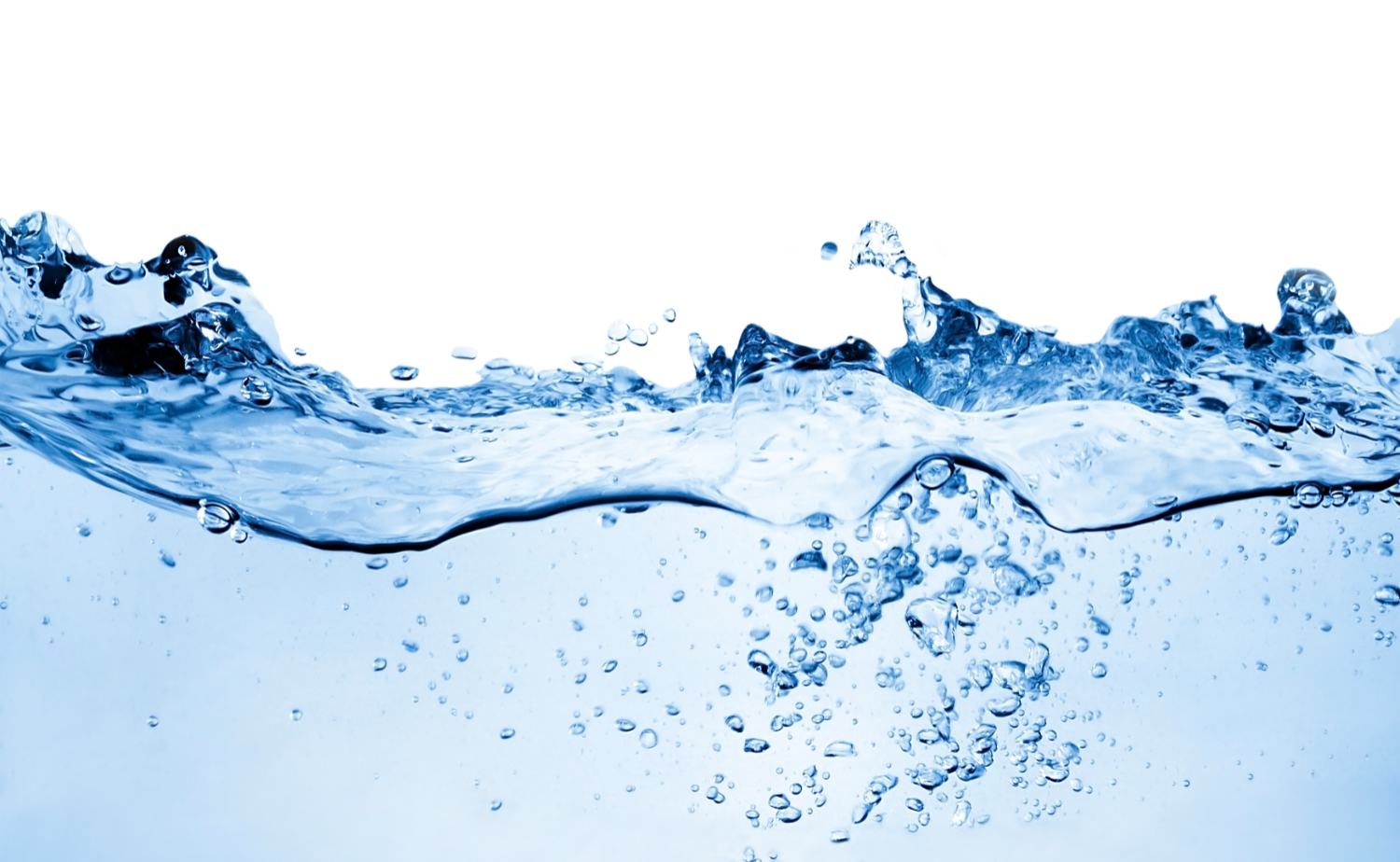
Chiller Water Maintenance for Laser Systems
Introduction: Why is it important?
It is important to regularly replace the water and flush the lines in the cooling system of an industrial laser system. Proper maintenance of the cooling water system helps ensure the optimal performance of the laser. Flushing and replacing the cooling water can help reduce corrosion, prevent algae from growing in the water lines, increase cooling efficiency, and prevent damage to components of your laser system. In this guide, we will explain the steps to flush and replace your cooling water. This guide applies to both CO2 and fiber lasers.
The water chemical kit we recommend
At MG Laser, we have chemical kits for replacing the water and for flushing the system. The kit for replacing the water includes corrosion inhibitors and a biocide additive that is added to fresh distilled or deionized water. Our flushing kits include the additive for the water replacement, as well as Citranox to flush the system.
Mazak CO2 laser systems
We offer the following kits for Mazak CO2 Laser systems. All chemicals are pre-measured for the tank capacities.
Replacement Kit - Additives only:

Flushing Kit - Additives plus Citranox:

Fiber Laser Systems
The water cooling systems for fiber lasers are not as intricate as the ones for CO2 laser systems, so our recommended fiber laser chemical kits do not include the extra copper corrosion inhibitor. However, there is an option to add the copper corrosion inhibitor if extra protection for the copper and brass components in your system is needed. All chemicals are pre-measured for the tank capacities in five-gallon increments. Round up to the nearest size for the best protection. For some Fiber lasers, the water cooling system may be small enough that the system may not ever need flushed if the water is replaced every three months. Always follow the laser manufacturer's recommendations.
Replacement Kit - Additives only:
Flushing Agent
- Citranox - Purchase a gallon of Citranox and dilute the concentration to 1% (half a gallon per fifty gallons)
What happens if the water is not replaced?
If the cooling water in your laser system is not replaced it can lead to many problems, most commonly clogs and leaks. Over time, corrosion and scale buildup will occur within the piping and components of the system which can clog the water lines and cause components to overheat. Algae growth can also take place, leading to clogs in lines and reduced cooling efficiency. If the water becomes acidic it can cause water to leak from various components and can even leak into the CO2 laser resonator. This can result in costly repairs due to problems including power loss, internal optics damage, and electrical arcing inside the laser tubes causing power supplies and high voltage transformers to work extra hard and possibly fail. Other common leak points can be water pumps, gas coolers, radiators, and fittings. These issues are easily preventable with regular maintenance.
Common water replacement considerations
Replacement Interval
The water must be replaced regularly with clean water and it is common to include chemical additives such as corrosion inhibitors to reduce or prevent the degradation of metal surfaces due to corrosion, as well as biocides to prevent algae from growing in the system.
Manufacturers' recommendations on the replacement interval typically vary from three to six months. Three month replacement intervals are more common for modern lasers. Replacing the water more often will ensure the water is in good condition. One factor that may influence this interval is whether or not the water cooling system is tightly closed from outside air. In a shop with laser cutting, welding, and other manufacturing processes, the water can be exposed to a very dirty environment, necessitating a more frequent replacement interval.
Distilled water
It is most common to fill the system with distilled water. This ensures there are no minerals present that can cause scaling that will clog or reduce water flow through the system. Distilled water is standard for most CO2 lasers.
Deionized water
Most fiber lasers are required to use deionized water. The manufacturer's recommendation should always be followed. Many systems include an extra deionization filter and a sensor to monitor for proper water condition. Click here for the IPG deionization filter. Deionized water is usually more expensive than distilled water, unless you have your own deionization filters for bulk water deionization.
More about corrosion inhibitors
A corrosion inhibitor for water is a chemical compound that is added to water systems to reduce or prevent the degradation of metal surfaces due to corrosion. Corrosion occurs when metals react with elements in the environment, such as oxygen and moisture, leading to the deterioration of the metal over time. Corrosion inhibitors work by forming a protective layer on the metal surface, preventing the corrosive elements from coming into direct contact with the metal and slowing down the corrosion process. These inhibitors are commonly used in various industries, including water treatment, pipelines, cooling systems, and more, to extend the lifespan of metal equipment and infrastructure.
The corrosion inhibitors we use in our chiller chemical kits include the following:
- General Corrosion Inhibitor - Sodium Molybdate
- Copper Specific Corrosion Inhibitor - Sodium Tolyltriazole
- The Copper Specific Corrosion Inhibitor is optional and is included for extra protection of the copper and brass components in the CO2 lasers. Systems that contain little or no copper and brass components do not need this extra chemical. Even if the system does have copper and brass, the General Corrosion Inhibitor is often enough to provide adequate corrosion protection.
Isogard versus Sodium Molybdate, and the problem with Isogard.
For many years, starting from the earliest Mazak lasers that were sold in the United States, the recommended corrosion inhibitor was Isogard. Isogard works and it has a long reputation to prove it, however, Isogard has a high PH level. Concentrated Isogard has a highly alkaline PH of 13.5. This is the same PH level as Bleach. Conversely, the alternative commonly being used is Sodium Molybdate, having a PH of 6.5-7.5. Even with Isogard diluted to 1% (half a gallon per 50 gallons) the measured PH level of the water was still 10.5 PH. Damage begins to occur in aluminum, one of the principal metals in lasers, around 9 PH. While a little aluminum etching in the system might not be a major problem, the water pump seal can also be susceptible to damage from chemical burns that will cause the pump to leak. Another sensitive area in the laser is the radiator in the gas coolers, where we find aluminum brazed to brass. We commonly find this connection is damaged if the water has not been replaced in years, if Citranox was left in the system for too long, or if too much Isogard has been added to the water. These situations result in extreme acidic or alkaline conditions in the water.
In summary, we have stopped recommending Isogard because it has a highly alkaline PH. The new chemical, Sodium Molybdate, has a PH that is closer to neutral and is therefore safer for the system. Sodium Molybdate is the corrosion inhibitor that we include in our water additive kits. We also still sell Isogard because many of our long-time customers want to keep using the chemical they’ve used for many years. Our Isogard options are below:
- Isogard - Single gallon of Isogard, you'll measure the quantity needed in the tank to a half-gallon per fifty-gallon ratio.
- GAX-26 - GAX-26 is a biocide in a 16oz bottle, we recommend 5 oz per 50 gallons of water. GAX-26 is the same biocide we use in the new chemical kits without Isogard. The name GAX-26 is the trade name given to a product that is no longer in production. The product we sell as GAX-26 has the same active ingredient at the same concentration.
- Isogard & GAX Flushing Kit -This kit includes a gallon of Isogard, 16 oz of GAX, and a gallon of Citranox.
More about biocides
An industrial biocide for water cooling systems is a chemical agent designed to control or eliminate the growth of microorganisms, such as bacteria, algae, and fungi, in water used for cooling industrial processes and equipment. Water cooling systems are prone to microbial growth due to the presence of nutrients, temperature fluctuations, and stagnant water conditions. Microbial growth can lead to biofouling, corrosion, and reduced heat transfer efficiency in the system. Industrial biocides are added to the cooling water to inhibit or kill the microorganisms, preventing the formation of biofilms and maintaining the system's performance.
The biocide we use in our chiller chemical kits includes the following common industrial biocides that are effective against a wide range of microorganisms, including bacteria, fungi, and algae:
- 5-Chloro-2-methyl-2H-isothiazol-3-one
- 2-Methyl-2H-isothiazol-3-one
Flushing the water cooling system
In addition to regular water replacement, we recommend flushing the water cooling system once every six months. The flushing chemical that we use is called Citranox. We use this on the Panasonic resonators in the Mazak laser system and would recommend it on any laser system. Citranox is a concentrated acidic cleaner that will remove metal oxides, scale, salts, and inorganic residues. Citranox is phosphate free, biodegradable, and readily disposable; meaning you don't need to worry about hazmat when draining Citranox. The dilution ratio from the manufacturer is 1-2% in water. We recommend half a gallon of Citranox per 50 gallons of water. To flush, run the water pump in the chiller with the High Voltage of the laser on for six hours. The high voltage will warm up the system and help loosen any contamination to be flushed out. Never leave Citranox in the system overnight because the high acidity can damage internal components and the water pump mechanical seal.
Replacement and Flushing Procedure
Here is our recommended water replacement and flushing procedure for the Panasonic Resonator in a Mazak laser system. We have kits available that include all the chemicals required to complete the replacement and flushing procedure. These kits include premeasured chemicals so you can empty the full contents of the bottles into the water tank. Please see the links above for the kits we offer on our website.
Required Material for water replacement:
The water replacement kit includes one bottle of each of the following:
- General Corrosion Inhibitor
- Copper Specific Corrosion Inhibitor
- Biocide
Required Material for flushing the system:
- Citranox
Water Replacement Procedure:
Every 3 months:
- Drain all the water in the tank.
- Fill with new distilled water.
- Add the full contents of each of the three bottles to the Distilled water in the chiller tank: General Corrosion Inhibitor, Copper Corrosion Inhibitor, and Biocide.
Flushing Procedure:
Every 6 months:
- Drain all the water in the tank.
- Fill the tank with tap water.
- Add the pre-measured bottle of Citranox, or 0.5 gal of Citranox per 50 gal of water.
- Run the chiller for 6 hours with high voltage on
- Flush out all the Citranox:
- Drain all the water in the tank.
- Fill the tank with tap water only.
- Run the chiller water pump for 10 minutes.
- Repeat 4 times to be sure all the Citranox is out of the water.
- With the tank empty, fill the tank using the “Every 3rd month” instructions.
